
 |
|
|
|
#1
|
||||
|
||||
|
Quote:
The P47 achieves a Vmax of 339mph on 2300shp and the FW-190A8 achieves 359mph on 1980 shp. |
|
#2
|
|||
|
|||
|
Quote:
t=P*r/V=1980*735*0.8/161=7231N m*g* sin(0)+t=d*Vmax^2 d=t/Vmax^2=7231/161^2=0.2790 when dive in 45 degree, let the new equilirium speed as V: new engine thrust should be 7231*(161/V) m*g* sin(45)+t=d*V^2 3500*9.8*0.707+7231*(161/V)=0.2790*V^2 thus v^3-86918V-4172728=0 Finally, we get V=316.4m/s=1139km/h. P47D 339mph=151.6m/s when level flys at Vmax, P47D in equilirium, zero acceleratiom, all forces are balanced. t=P*r/V=2300*735*0.8/151.6=8921N m*g* sin(0)+t=d*Vmax^2 d=t/Vmax^2=8921/151.6^2=0.3882>0.2816 Obviuosly ,P47d has more air drag coefficenct due to bigger wing area. when dive in 45 degree, let the new equilirium speed as V: new engine thrust should be 8921*(151.6/V) m*g* sin(45)+t=d*V^2 6000*9.8*0.707+8921*(151.6/V)=0.3882*V^2 v^3-107089V-3483833=0 Finally, we get V=342.4m/s=1232.6km/h>1139km/h. Last edited by BlackBerry; 06-06-2012 at 02:47 PM. |
|
#3
|
|||
|
|||
|
http://en.wikipedia.org/wiki/Pratt_%...00_Double_Wasp
R-2800-59 - 2,300 hp (1,700 kW)  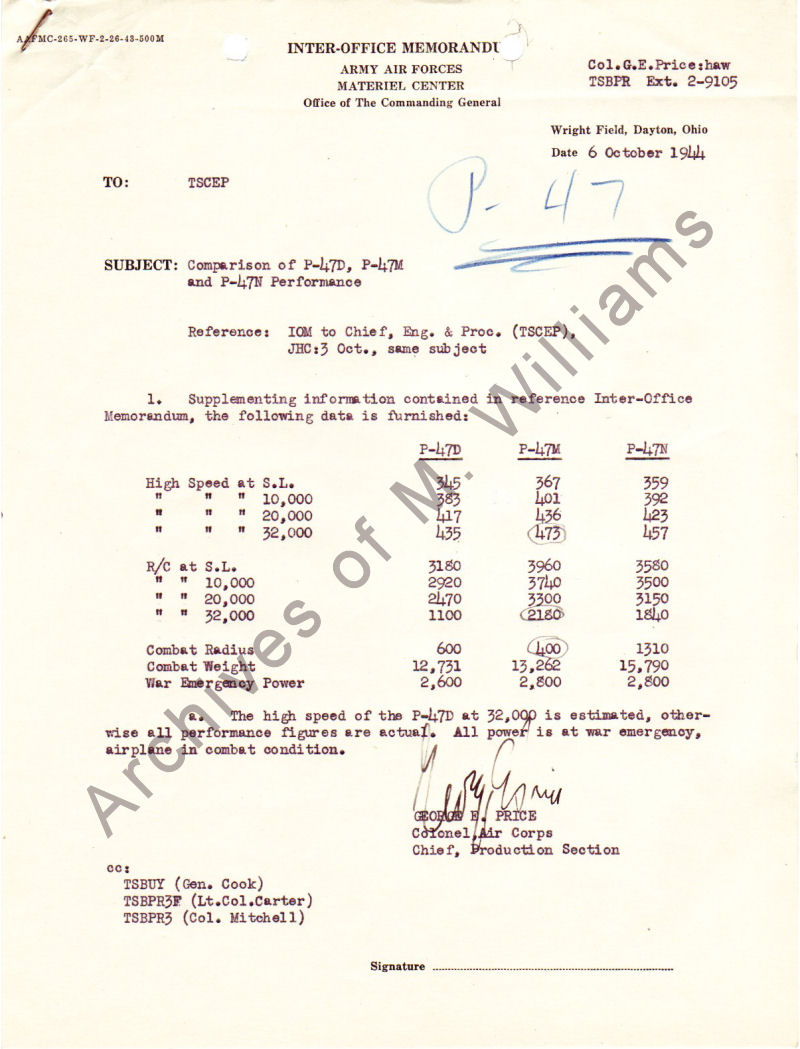 2300HP ---345mph@SL Specifications (P-47D Thunderbolt) General characteristics Crew: 1 Length: 36 ft 1 in (11.00 m) Wingspan: 40 ft 9 in (12.42 m) Height: 14 ft 8 in (4.47 m) Wing area: 300 ft² (27.87 m²) Empty weight: 10,000 lb (4,536 kg) Loaded weight: 17,500 lb (7,938 kg) Specifications (Fw 190 A-8 ) Data from Fw 190 A 8 General characteristics Crew: 1 Length: 9.00 m (29 ft 5 in) Wingspan: 10.51 m (34 ft 5 in) Height: 3.95 m (12 ft 12 in) Wing area: 18.30 m² (196.99 ft²) Empty weight: 3,200 kg (7,060 lb) Loaded weight: 4,417 kg (9,735 lb) Last edited by BlackBerry; 06-06-2012 at 01:52 PM. |
|
#4
|
||||
|
||||
|
Regarding the Fw-190A8 details, this may be of some use to you, since your figures are slightly off.
 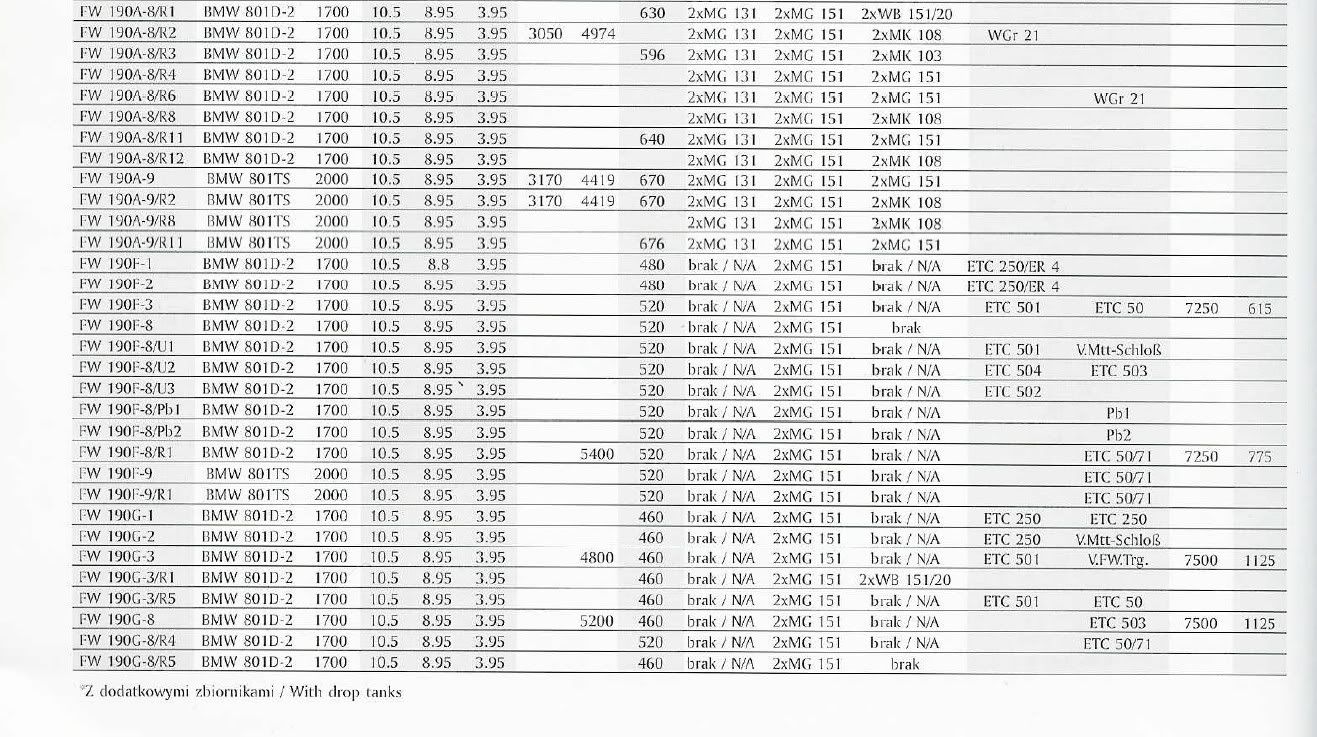 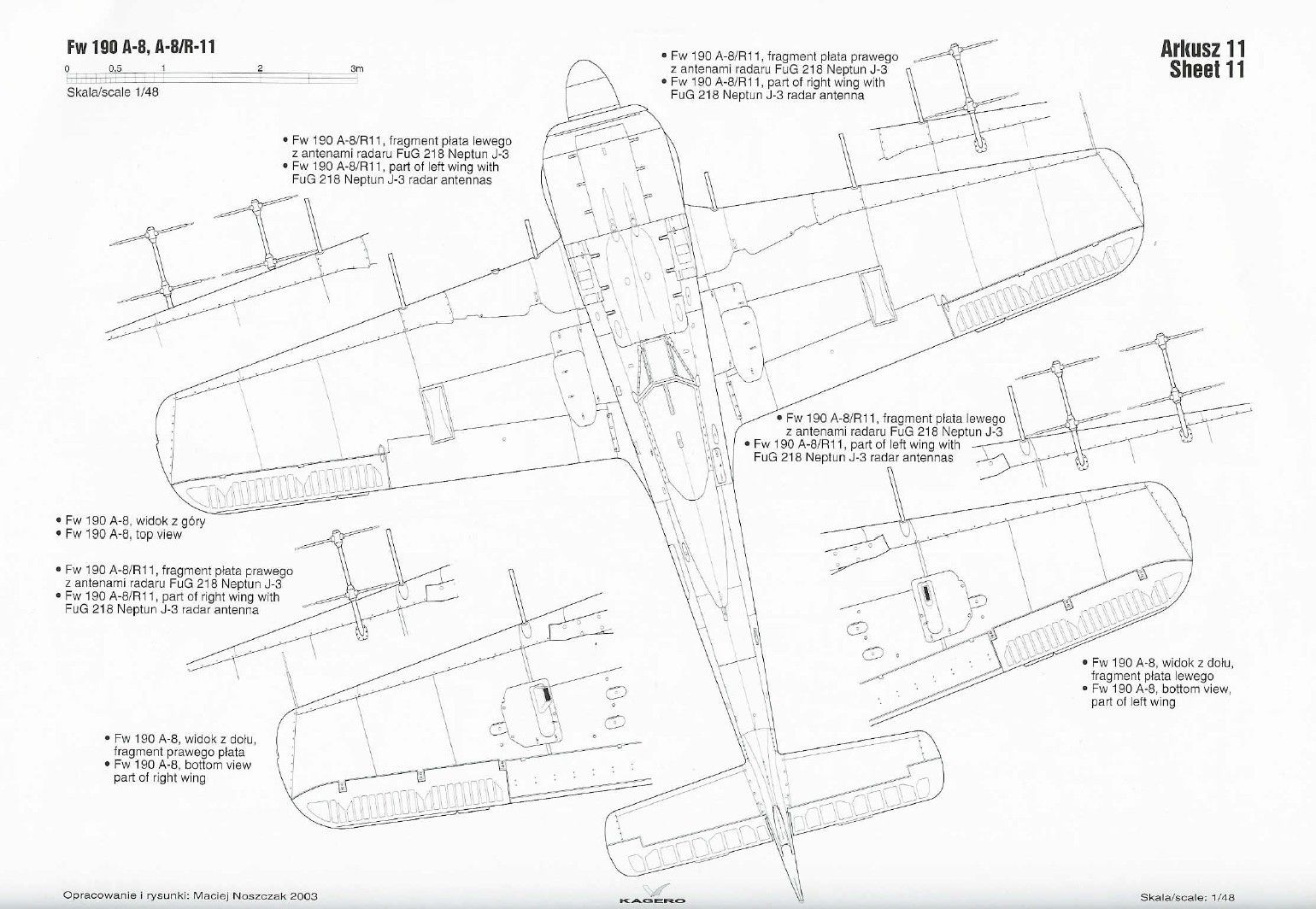
Last edited by fruitbat; 06-06-2012 at 02:11 PM. |
|
#5
|
|||
|
|||
|
Fruitbat, fw190A8 has extra exhaust thrust when max level fly at sea level. So fw190a8 could achieve 580 km/h with the help of (1950HP*0.8+exhaust thrust).
IMG_0830.jpg 580km/h is quite a high speed, so fw190 A8 is boosted by more than 2000HP. P47 loses its exhaust thrust due to exhaust turbocharger. The Fw 190 A-8 entered production in February 1944, powered either by the standard BMW 801 D-2 or the 801Q (also known as 801TU). The 801Q/TU, with the "T" signifying a Triebwerksanlage unitized powerplant installation, was a standard 801D with improved, thicker armour on the front annular cowling, which also incorporated the oil tank, upgraded from 6 mm (.24 in) on earlier models to 10 mm (.39 in). Changes introduced in the Fw 190 A-8 also included the C3-injection Erh?hte Notleistung emergency boost system to the fighter variant of the Fw 190 A (a similar system with less power had been fitted to some earlier Jabo variants of the 190 A), raising power to 1,980 PS (1,953 hp, 1,456 kW) for a short time. The Erh?hte Notleistung system operated by spraying additional fuel into the fuel/air mix, cooling it and allowing higher boost pressures to be run, but at the cost of much higher fuel consumption. From the A-8 on, Fw 190s could be fitted with a new paddle-bladed wooden propeller, easily identified by its wide blades with curved tips 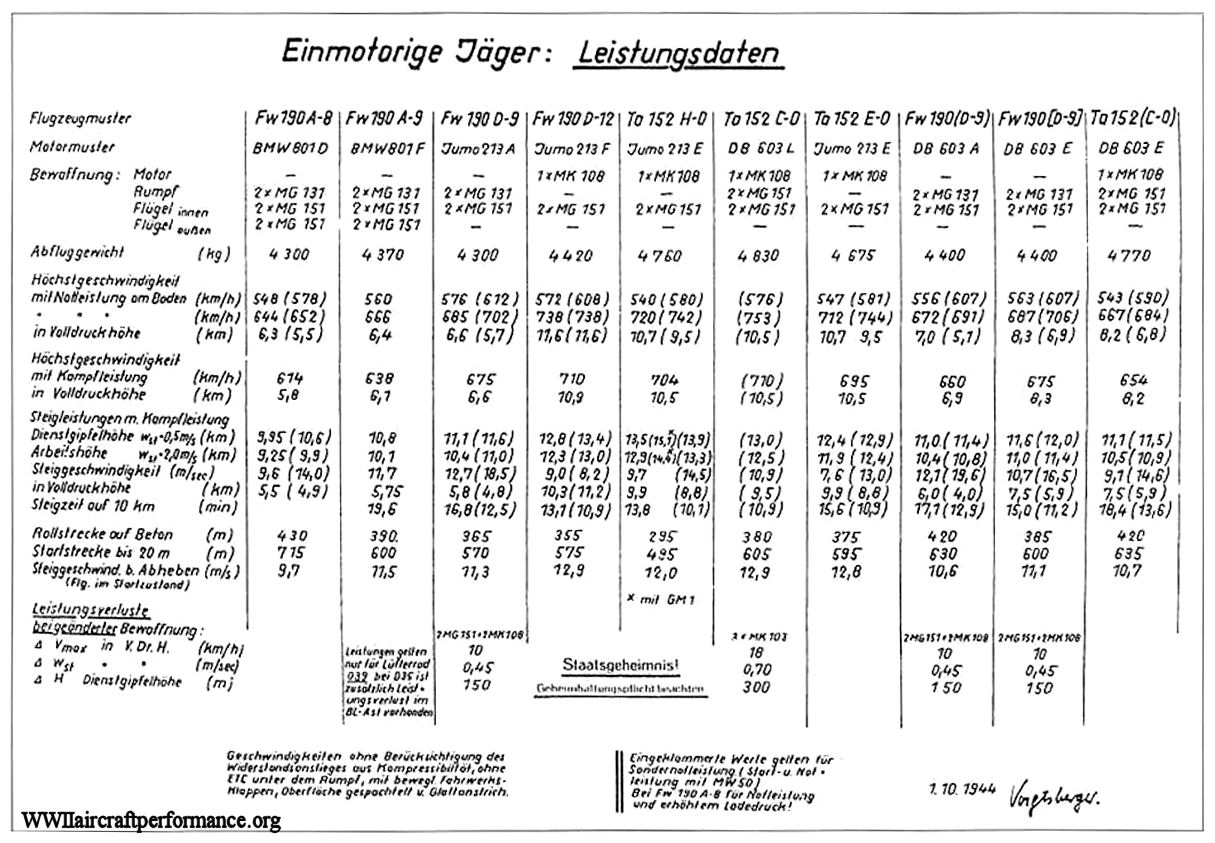 So fw190a8 drag coefficient is no less than 0.2790. Or we could calculate the loaded weight fw190A8, that's 4500kg. when dive in 45 degree, let the new equilirium speed as V: new engine thrust should be 7231*(161/V) m*g* sin(45)+t=d*V^2 4500*9.8*0.707+7231*(161/V)=0.2790*V^2 thus v^3-111752V-4172728=0 Finally, we get V=352m/s=1267km/h>1232.6km/h. Slightly bigger than a 6-ton P47D. If we use a 7-ton P47D, again, P47 has more equilibrium speed. So, the aircraft weight plays a important role in a 45 degree dive. Last edited by BlackBerry; 06-06-2012 at 03:19 PM. |
|
#6
|
||||
|
||||
|
Blackberry, the reason i posted the charts i did, is because the weights you are using appear to be off.
empty is 3050, max load is 4272 for a standard A8, it also lists the HP as 1700. how you want to interpret that is up to you. Oh, you might want to rethink your view on available HP at altitude, @5,700m it increases the engine power to 1,440HP at sea level it does what you say, but your not going to be diving much at sea level me thinks! 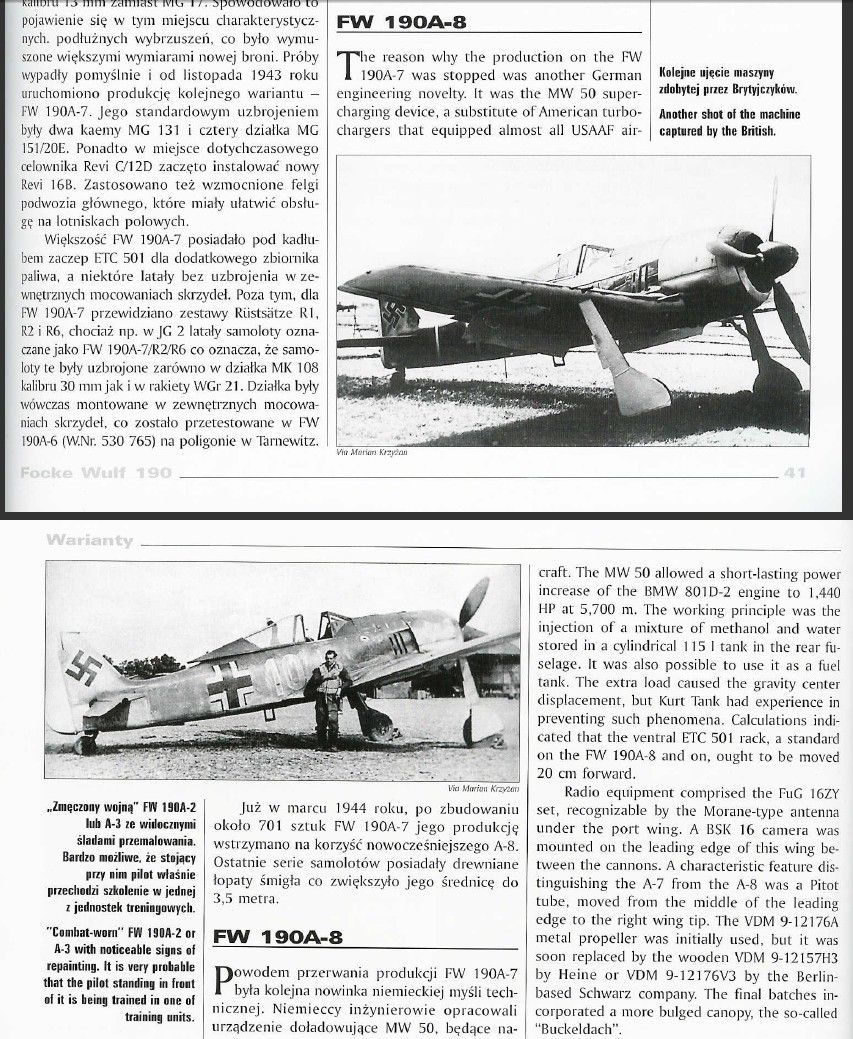 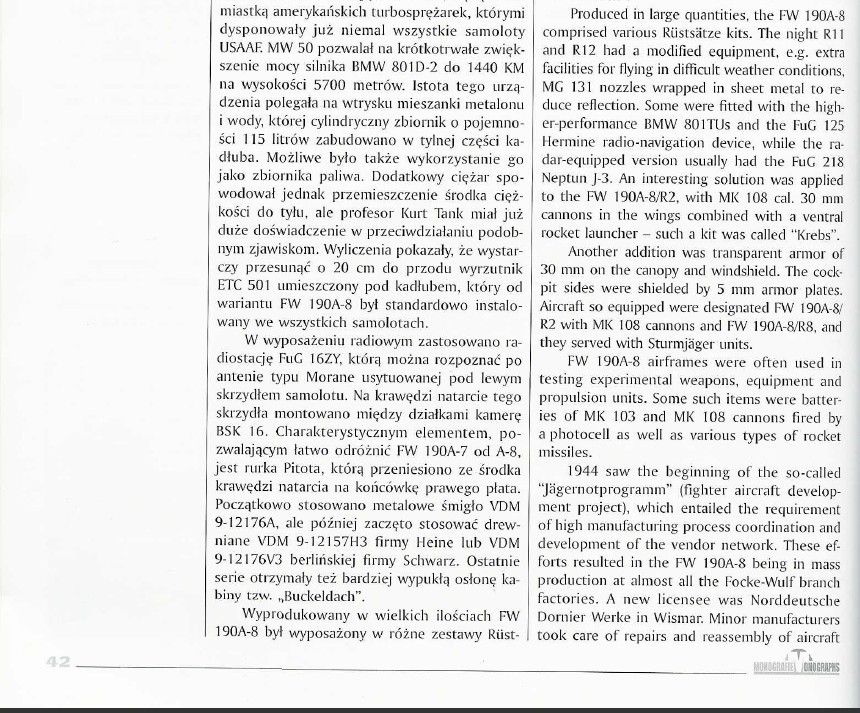 as for when the A8 was produced, i am well aware, this may interest you regarding production. factory produced, serial numbers, numbers and dates. 
Last edited by fruitbat; 06-06-2012 at 03:48 PM. |
|
#7
|
|||
|
|||
|
Quote:
See my edited post. Fw190A8 is Notleistung emergency boost system which produce 1953HP, I use 1980HP in calculation. There is some exhaust boost(bigger than 27HP at high speed). 578km/h, I use 580km/h. So fw190a8 drag coefficient is no less than 0.2790 Ok, let's be more accurate with 4272kg when dive in 45 degree, let the new equilirium speed as V: new engine thrust should be 7231*(161/V) m*g* sin(45)+t=d*V^2 4272*9.8*0.707+7231*(161/V)=0.2790*V^2 thus v^3-106090V-4172728=0 Finally, we get V=344m/s=1238km/h. roughly euqal to 1232.6km of 6-ton P47D. 1)There should be 100HP+ exhaust boost for fw190A8@580km/h@SL, so darg efficienct should be more than 0.2790. 2) max load is 4272kg for a standard A8, max load is 8000kg for a standard P47D, even with 7-ton weight, P47D could also has higher equilirium speed. |
 |
|
|